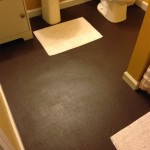Engineered hardwood floors are a great choice for any home. Not only are they durable and long-lasting, they also provide a unique look and feel that other flooring options cannot match. Installing engineered hardwood floors is not a difficult task, but it does require a bit of knowledge and preparation before starting the project. In this article, we will discuss the steps involved in installing engineered hardwood floors, as well as some tips and tricks that can make the process easier.
Choose the Right Hardwood Flooring
The first step in installing engineered hardwood floors is to choose the right type of hardwood flooring for your home. Engineered hardwood floors come in a variety of styles and colors, so it is important to take the time to find the perfect look for your home. Consider the size of the room, the amount of natural light, and the tone of the existing décor when choosing the perfect hardwood flooring for your home.
Prepare the Floor
Once you have chosen the perfect hardwood flooring for your home, it is time to prepare the floor. If you are installing the floor over an existing floor, it is important to make sure the surface is level and free of any debris or dirt. If installing over a concrete substrate, it is important to make sure the surface is clean and free of any cracks or defects. You may also need to use a primer or sealant before laying the floor.
Lay the Flooring
Once the floor is prepared, it is time to start laying the flooring. Begin by laying the longest boards first, starting in the corner and working your way outwards. Make sure to leave a gap between the boards for expansion. To ensure a tight fit, use a tapping block and a hammer to secure the boards together. Use a jigsaw to cut any boards that need to be trimmed to fit.
Install the Molding
Once the hardwood flooring is laid, it is time to install the molding. This is the trim that will be used to finish off the edges of the floor. There are several different types of molding available, including baseboards, quarter rounds, and shoe moldings. Choose the type that best suits the look of your home. Install the molding by nailing it into the wall and baseboards, and use caulk to fill any gaps.
Finish the Floor
Once the flooring and molding are installed, it is time to finish the floor. This involves sanding and sealing the floor to protect it from dirt and moisture. Start by sanding the floor to remove any imperfections and smooth out the boards. After sanding, apply a sealer or finish to protect the floor from dirt and moisture. Allow the sealer to dry completely before walking on the floor.
Tips for Installing Engineered Hardwood Floors
Installing engineered hardwood floors is not a difficult task, but there are a few tips and tricks that can make the process easier. Here are some of the most important tips to keep in mind when installing engineered hardwood floors:
- Measure the room twice and make sure to account for any trim or molding.
- Use a tapping block to ensure a tight fit between the boards.
- Be sure to leave a gap between the boards for expansion.
- Use a jigsaw to trim any boards that need to be cut to fit.
- Sand and seal the floor after installation.
- Allow the sealer to dry completely before walking on the floor.
Installing engineered hardwood floors is not a difficult task, but it does require a bit of knowledge and preparation. Following the steps outlined in this article, as well as the tips and tricks provided, can help make the process easier and ensure a successful installation.















Related Posts








